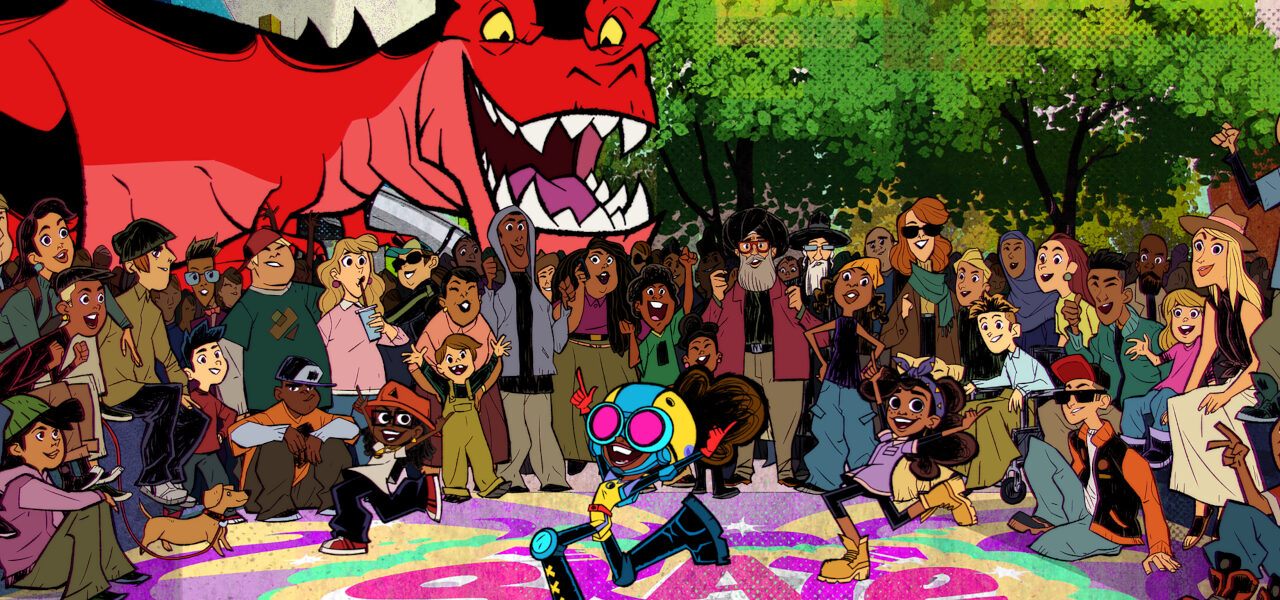
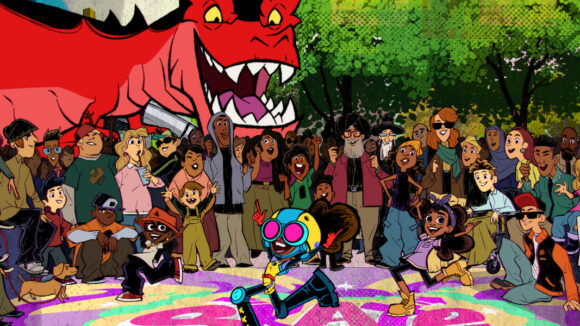
‘Moon Girl And Devil Dinosaur’ Producers Breakdown Show’s Signature ‘Mixtape’ Sequence (Exclusive Artwork)
Marvel’s Moon Girl and Devil Dinosaur debuted on linear tv last week and hits Disney+ today. On the occasion of the show’s release, we asked executive producer Steve Loter and supervising producer Rodney Clouden to break down one of the show’s signature “mixtape” sequences for us and share a bit of exclusive artwork.
Loter is an Emmy-winning producer (The Penguins of Madagascar) who is also currently executive producing Disney’s Annie-nominated series The Ghost and Molly McGee. He previously served as supervising director and producer of Disney Channel’s Kim Possible as well as the two Kim Possible movies. Other credits include The Ren & Stimpy Show, Duckman, and Clerks.
Clouden has an Emmy of his own for his work on the hit adult animated series Futurama. His other animation credits include animated shows such as The Wild Thornberrys, Drawn Together, and American Dad!.
Moon Girl and Devil Dinosaur is a Disney Television Animation production in collaboration with Australian animation studio Flying Bark Productions. Alongside Loter, executive producers include Laurence Fishburne and Helen Sugland’s Cinema Gypsy Productions.
The show is based on Marvel’s comic book series of the same name which follows the adventures of 13-year-old super-genius Lunella Lafayette and her 10-ton T-Rex, Devil Dinosaur. After Lunella accidentally brings Devil Dinosaur into present-day New York City, the duo works together to protect the city’s Lower East Side from danger.
Setting the Scene
Loter: This is one of our “mixtape” scenes. Work on these scenes starts with the script and a song. For this scene, I had the Childish Gambino song “Sweatpants” in my head, but I remember pitching it and our director was horrified because the pace of the song is slower than you might expect for an action sequence. But I believed it would work and that the pace would enhance the action sequence and make it feel unique. Lunella is on roller skates, and the song has a very fluid motion that fits with our narrative and makes a lot of sense. Then, as the song picks up, it let [director] Ben Juwono play with the camera, put in some moves, turns, and flash card shots as she’s flying through the air.
Standing Out
Loter: There were a bunch of superhero shows that existed by this time, so we wanted to find a way to make this special. The show already had the first African American teen girl superhero, which is very important, so for our contribution, we looked at what we could do with the city of New York. We looked back to the time that we were growing up in New York, around the time of the height of the graffiti movement. We wanted to mix that sensibility combined with some of the New York art benchmarks, Andy Warhol, and the screen printing process. Basquiat the street art murals you would see in New York City at a time before gentrification when it felt like a really creative environment, a really wonderful place for artists to nurture their craft. Even though the show is set in current times, we made this idealized creative version of New York City.
Clouden: I grew up in New York during the Golden Age of hip hop, the late 1980s-early 1990s. It was this whole scene and it was really raw and had textures that we wanted our New York to have too. We wanted to show that visually, musically, and sonically, and have New York be its own character. Spider-Verse was a big influence for us and so we really tried to incorporate some of that style, or at least let it influence us while planting our own flag in the sand. That’s where we came up with the idea for the mix tape moments like in the clip. It lets us play with different animation styles and inspirations and the music and the visual styles influence each other.
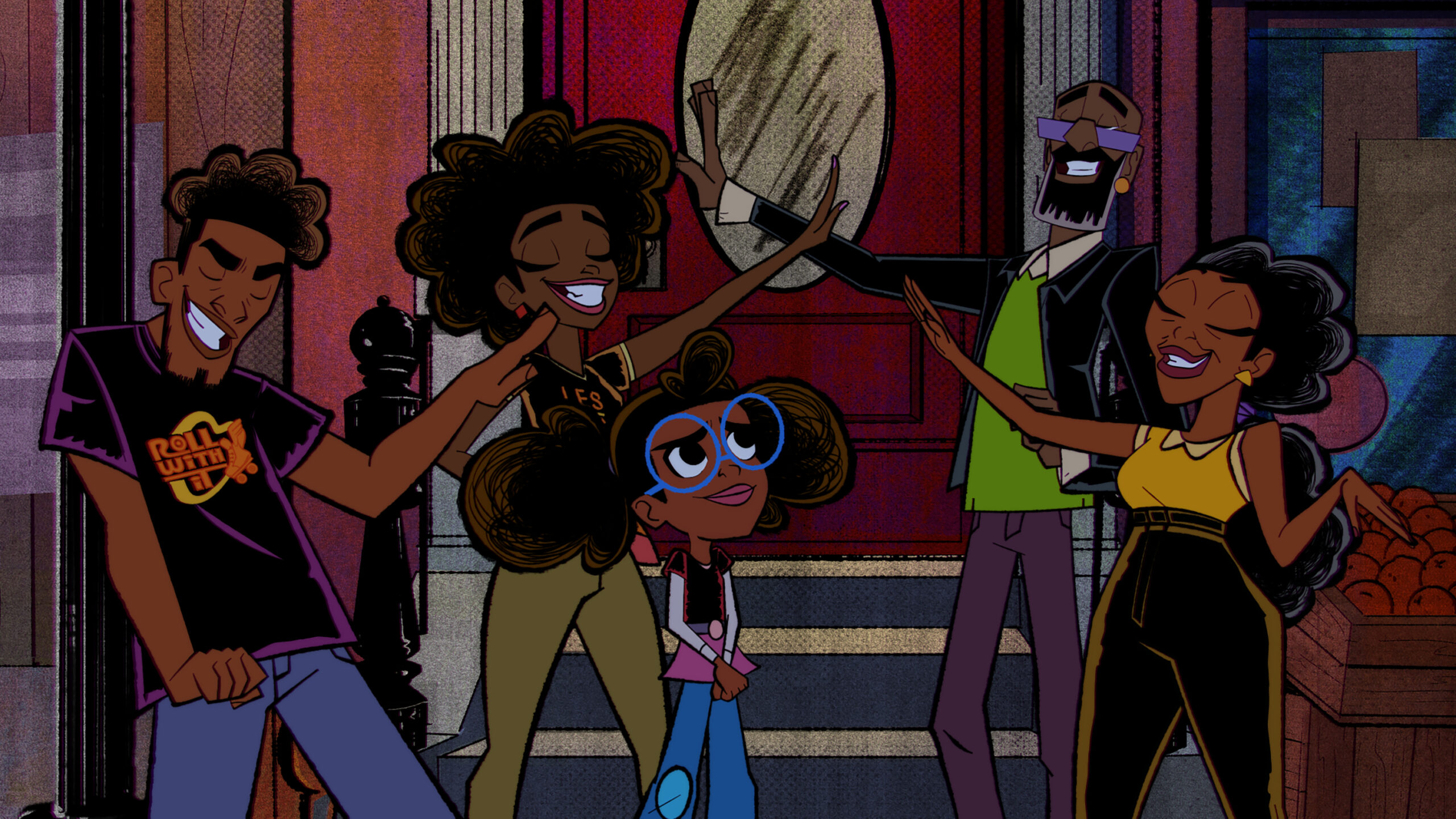
Not Your Friendly Spider-Man’s Neighborhood
Clouden: Lunella’s neighborhood, it’s the LES, the Lower East Side. Her neighborhood is a major part of Lunella’s life and she really wants to protect it. She’s all about her family and her community. Creating that specific look, something different than what we’ve seen in Spider-Man, we used a screen printing aesthetic from the old comic books when they were printed on paper and the ink would be offset just a bit and things didn’t always match perfectly. It was cool and created a look. Then for the characters, you have the more modern ink style that sets in front of the backgrounds which creates a juxtaposition.
Loter: By the time we got to this scene, we had kind of already established what we wanted for the show graphically, but in the mixtape moment Ben was unleashed and worked hard to match the music to the animation, tying in the show’s overall themes as well.
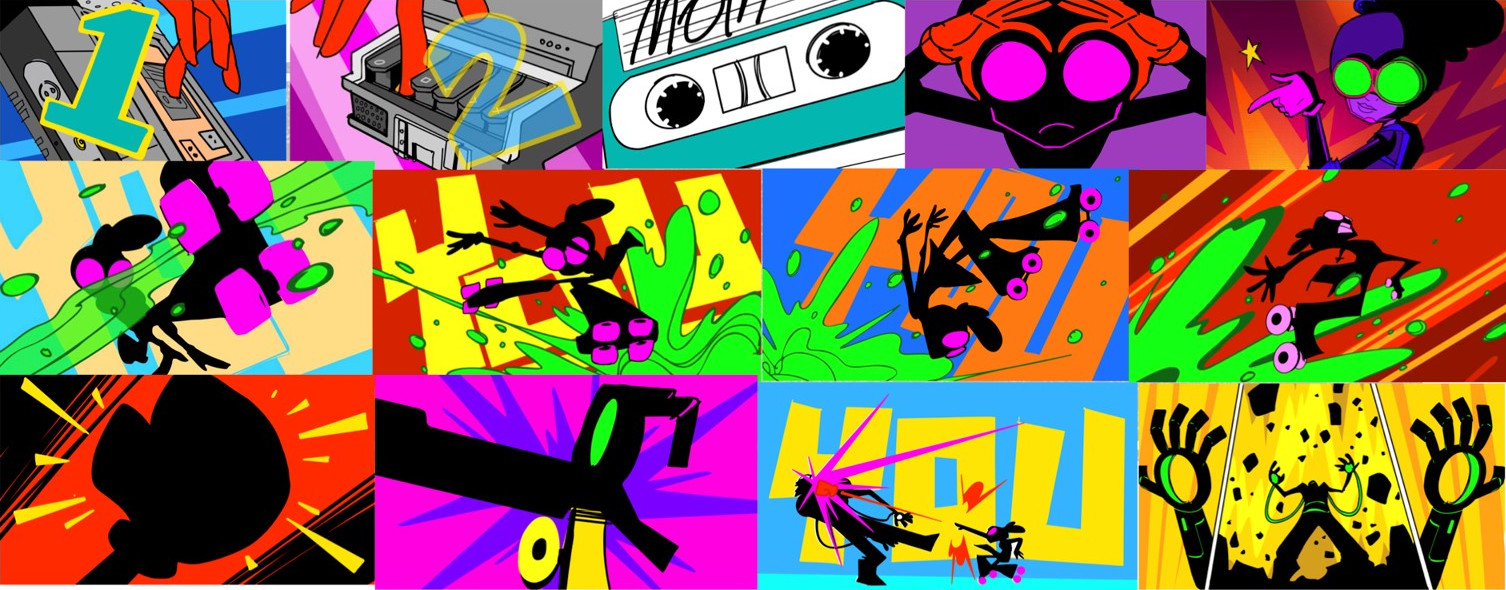
Finding the Rhythm of a Scene
Loter: When we were working on this clip I was heavily inspired by the work of Edgar Wright and in particular Scott Pilgrim and definitely Baby Driver. I was obsessed with how Baby Driver infused music into the narrative and the visuals. I’m a huge music nerd, so any opportunity to infuse music into the structure of something I’m working on, I’m gonna do it. So for this sequence we go into this surreal version of the narrative where the art style can turn into something that feels more monochromatic and have different design elements that heighten the reality. The shifting style can enhance thematically what’s going on in the story, but also enhance the integration of the music with everything else going on. Ben was unleashed and worked hard to match the story beats with the movement and the music because Moon Girl had to outlast Gravitas so he’d use all his power up. The episode is about patience, so Ben had to come up with a visual way to represent that virtue.
Clouden: When the scene slows down at times, the animation is more fluid and works hard to draw the audience in to feel the emotion and the gravity of the scene. For these mixtape moments, we would draw inspiration from the song lyrics or the theme of the episode. Sometimes the theme of the episode will integrate itself into the mixtape visually and literally with the song that plays.
Collaboration
Loter: I was fortunate to have worked in tv and then feature before coming back to tv. I was able to see the different working processes for each, and one of the things I really enjoyed about feature, aside from the time you get to focus on scripts, was the level of collaboration you would get. Working in feature, we had story trusts where other directors, producers, and artists would look at our work and critique it, making sure it was elevated to a place that felt like the best it could be. On this show, we had that level of collaboration with Flying Bark. We had a great mix of veteran and young artists who were working together to make this show the best it could be.
Clouden: The Disney execs deserve a lot of credit here too. The company never stood in our way or told us to back off from something we were trying to do, no matter how ambitious. When we would come up with an idea, they would look at our plans and tell us to go for it. I think the show is all the better for that hands-off approach.
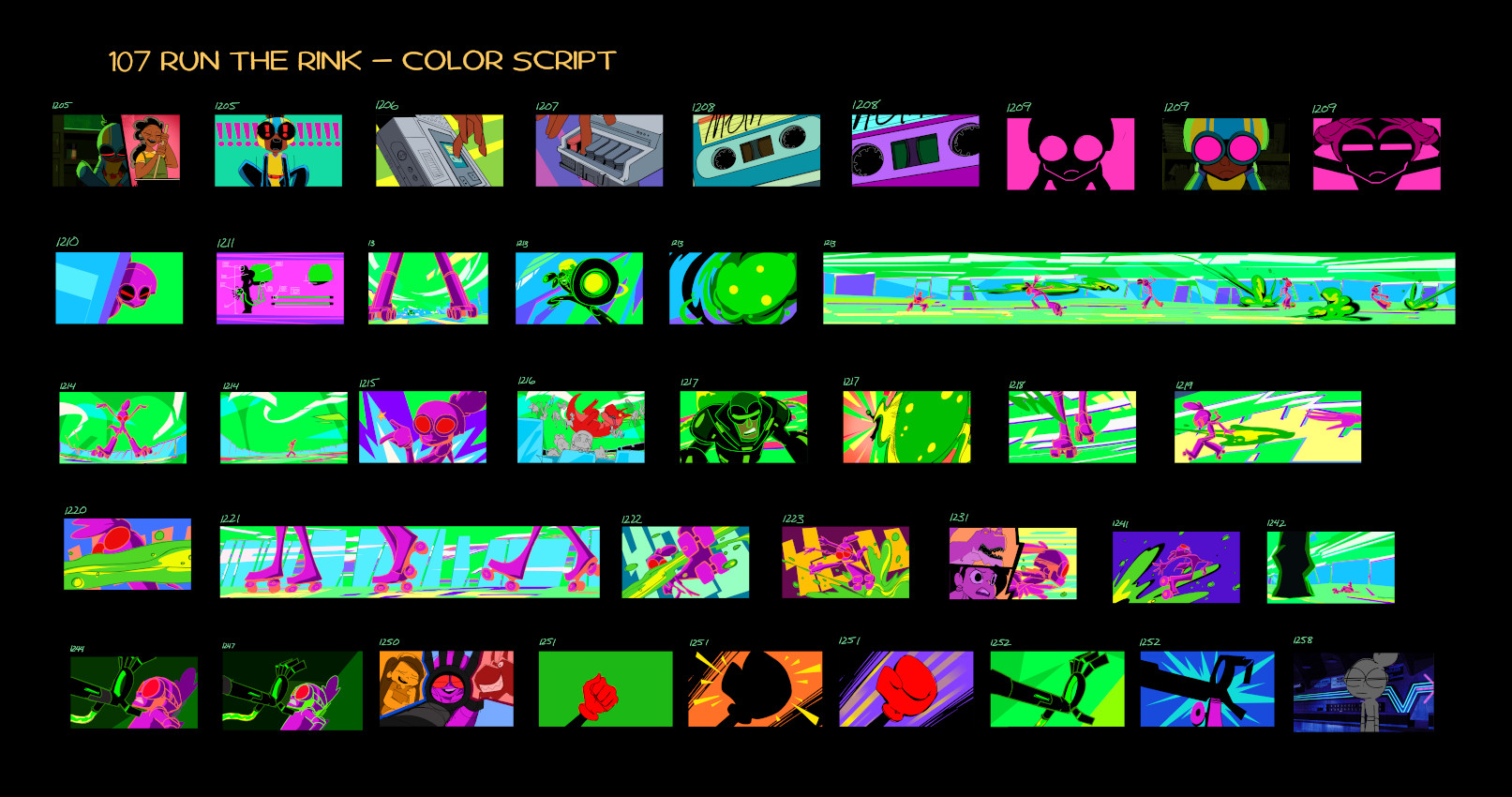
Dailies
Loter: One thing that Flying Bark does fantastically is send dailies of rough animation to Rodney and me.
Clouden: Cat Kosmala [animation supervisor] and Jose Lopez [character art director] meet with us for about an hour and a half and go over dailies for some episodes every week. We comb through them together and take notes. It’s always so exciting to get this package that we know is coming in our email and see what they’ve got for us. They blow our minds every time. It’s very unusual to get dailies every week, and I’m very thankful for that. It streamlined the process down the line and let us fine-tune to make sure everything turned out the way we wanted.
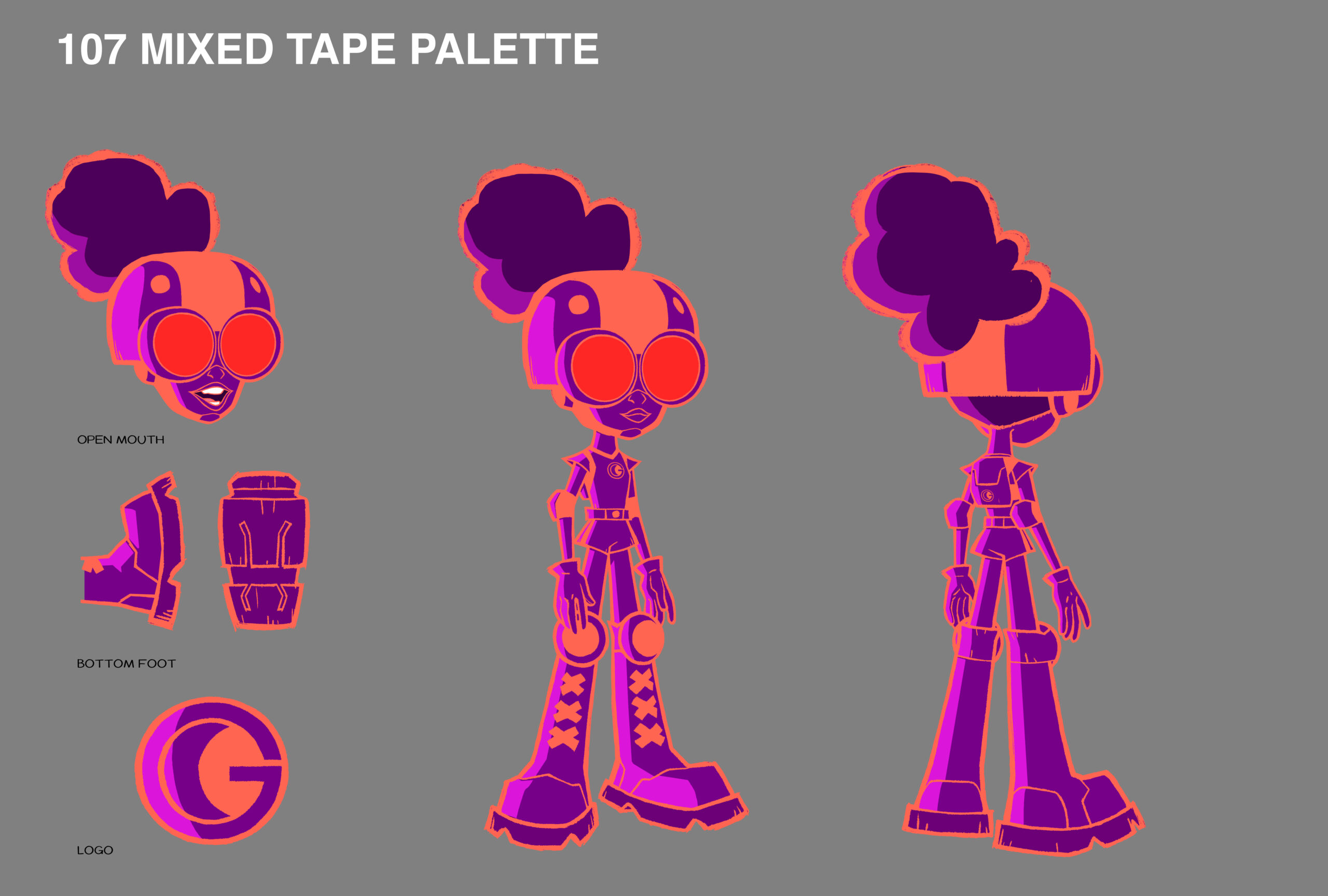
Odd Couple
Clouden: The fact that Lunella and a Devil work so well on screen together is a testament to our storyboard artists and directors. Their relationship is important, and we want them to be seen as equals. It’s not a master and pet situation; they’re partners. When you’re crafting scenes, you want to make sure that’s represented. There is also a bit of creative staging needed, a bit of magic mixed with reality. If she needs to talk to him, she’ll sometimes use her hover wings to speak with him face-to-face or they’ll play with depth of field with her in the foreground and Devil in the background. There are a lot of ways to stage them. It might sound difficult, but if you’re good enough you can come up with some creative ways to deal with it.
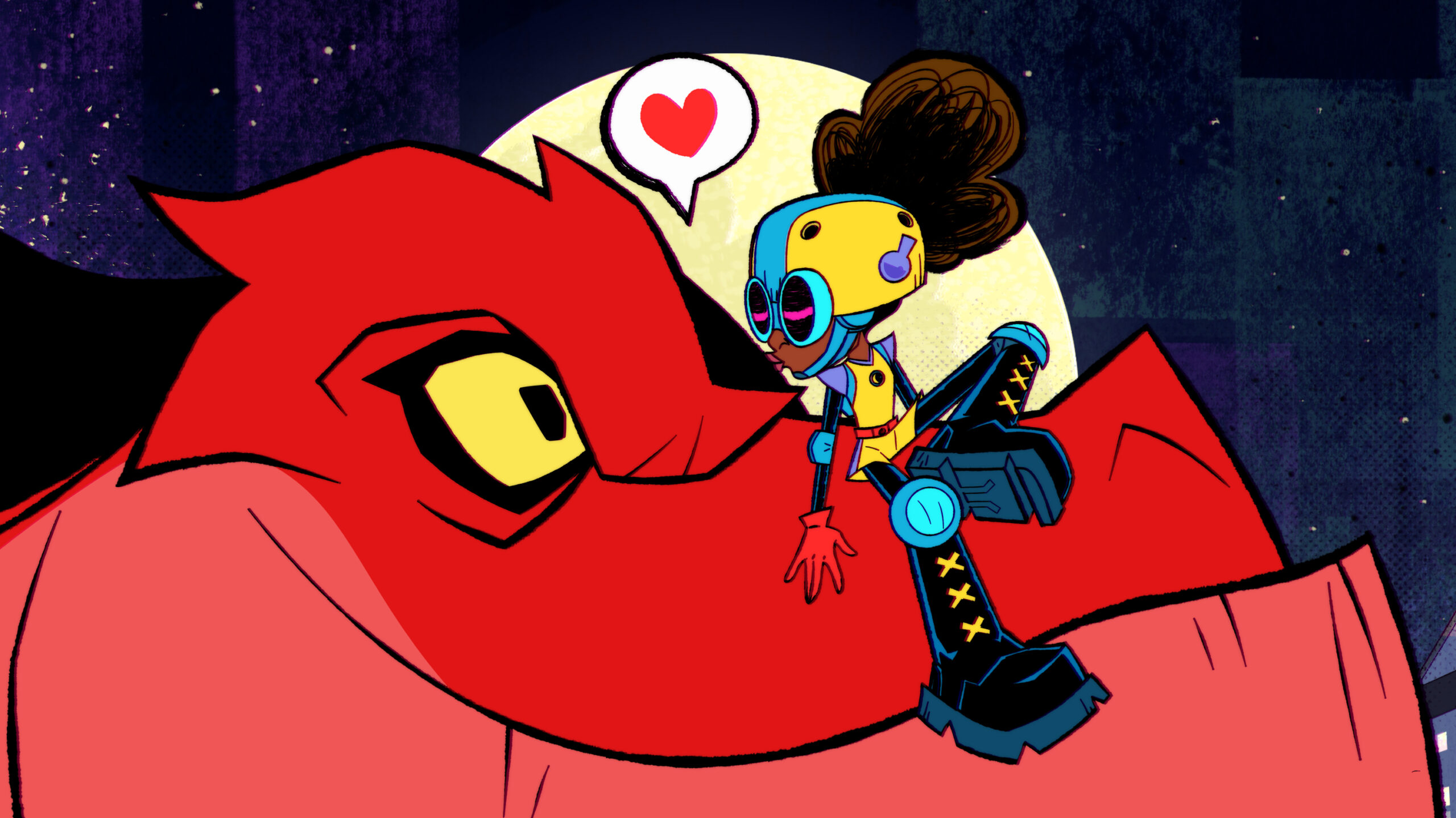

.png)